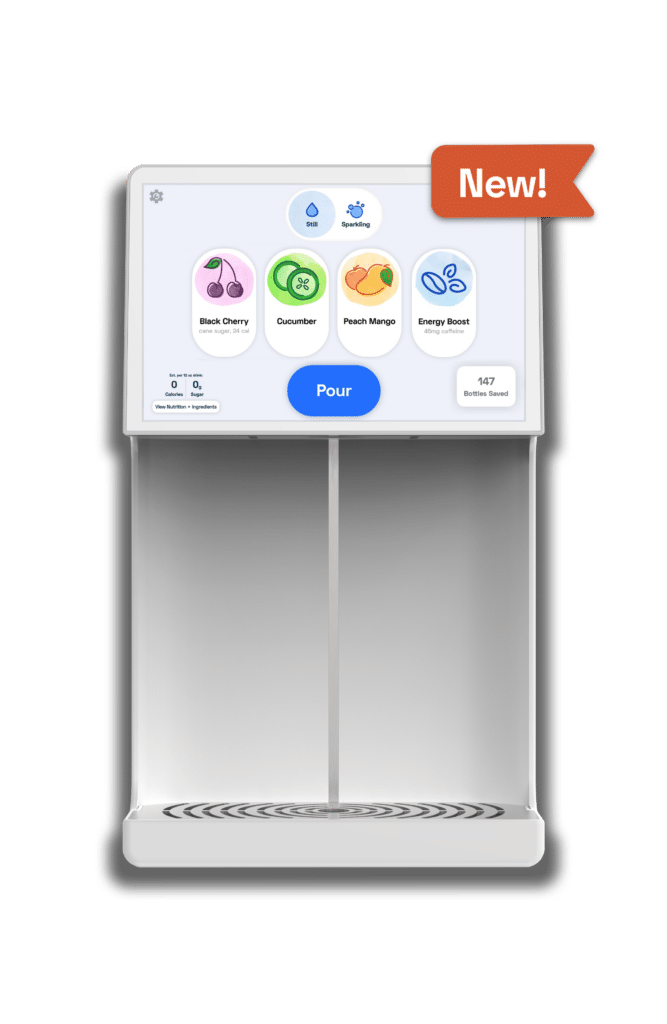Last updated June 20, 2025. The crisp, refreshing combination of lemon and lime flavors in carbonated water has been a favorite for soda and sparkling beverages for over a century. But behind the classic citrus flavor lies a decades-long contest for market share and cultural relevancy. (Sprite is winning on all three fronts.) Starry soda is the first truly competitive new entrant in some time, a bright, bold take from PepsiCo on a familiar favorite, backed by sharply tuned brand marketing.
To understand the launch and purpose of Starry soda, we need to start at the beginning. From the lithium-induced mood booster launched during the Great Depression to the Gen Z-targeted rebrand Starry, this is a streamlined history of lemon-lime sodas.
Before Starry soda: The rise of lemon-lime soda
Our story begins in the roaring (and very thirsty) 1920s. Right before the Great Depression hit, lore has it that Charles Leiper Grigg introduced a little soda drink with a not-so-little name: Bib-Label Lithiated Lemon-Lime Soda. It wasn’t the first (or second) formulation Grigg had tried to crack at the soda market.
1919: The Whistle origin story
In 1919, while working as one of the top salesmen in a manufacturing company, Grigg created his first ever soft drink. His exposure to the carbonated beverage industry led him to the successful creation of Whistle, a citrus-flavored soda.
The drink managed to gain early traction, but internal clashes with the company’s owner led Grigg to walk away, leaving both the brand and its potential behind.
1920: The Howdy origin story
Grigg’s second drink, Howdy, an orange-flavored soda, gave him an opportunity to establish his very own company under the same name, Howdy Company, together with financier Edmund G. Ridgway.
His drink once again was able to carve out a niche in the market initially, but with the looming clouds of the Great Depression of 1929, the market was evolving rapidly. Consumers tightened their wallets, and flashy, high-priced sodas like Howdy fell out of favor.
1929: The Bib-Label Lithiated Lemon-Lime Soda origin story
What the market needed now was something cheap, simple, and uplifting—a gap Grigg was determined to fill. Lucky for him, his next drink would become the first significant lemon-lime soda for the modern American.
Marketing alongside the already successful Howdy, Bib-Label Lithiated Lemon-Lime Soda successfully offered consumers a “flavor wallop.”
That lasted one year before a (very notable) rebrand
Thankfully, the longwinded name for Grigg’s concoction didn’t last for too long. From 1930 to 1931, it was rebranded to 7 Up Lithiated Lemon Soda.
Then, in 1937, it was streamlined again to the crisp, catchy “7 Up” after the federal government cracked down on false advertising—specifically claims about lithium, which wasn’t actually in the formula anymore.
The synopsis for these early chapters
Here’s a bit of conflict to note. Despite all of the recurring lore in lemon-lime soda history, there is no hard-backed evidence that Grigg’s Bib-Label Lithiated Lemon-Lime Soda was, in fact, the original name behind 7 Up. Trade mark filings and period advertisements don’t exactly back it up. Still, the history of Starry soda would be incomplete without tipping a bottle cap to the fizzy forefathers who paved the way, even if it’s unclear how exactly they did it.
Coca-Cola crashes the citrus party
With 7 Up bubbling to the top in the mid-20th century, Coca-Cola was feeling a little flat. Despite having success in the lemon soda game in West Germany with a product launched under the Fanta line, Fanta Klare Zitrone (Fanta Clear Lemon), it didn’t have the pop it needed to compete back in the U.S.
So, in 1961, Coca-Cola rebranded the drink as Sprite—a name that captured the bright and undeniably fun vibe they were going for. The word “sprite” is derived from the word “spirit” in English, and often refers to an elf, fairy, or disembodied soul.
By the 1980s, Sprite was known as a teenage favorite. But it was the “Obey Your Thirst” campaign of the 1990s that truly launched the brand into pop culture. Tapping into hip-hop, streetwear, and youth expression, Sprite blew past being another lemon-lime soda and solidified itself as its own unique movement.
Meanwhile, in the PepsiCo lab…
Wondering who makes Starry Soda and how this fizzy newcomer entered the chat? That would be PepsiCo, the longtime Coca-Cola rival with a lemon-lime history of its own. Long before Starry Soda hit the shelves, PepsiCo had been on a decades-long quest to crack the citrus code.
Watching from the sidelines was PepsiCo, stuck with nothing but Mountain Dew and envy. Out of pure desperation, they launched Teem in 1960, a lemon-lime drink meant to go head-to-head with Sprite and 7 Up. But it never truly caught on.
In the ‘80s and ‘90s, they experimented again. First with Slice (including a lemon-lime flavor), then a short-lived soda called Storm in test markets. Neither survived, and Pepsi remained without a pure lemon-lime delicacy in their portfolio throughout the 1990s.
1999: Enter Sierra Mist (and a whole lot of confusion)
After years of trying, Sierra Mist launched nationwide in 1999 as Pepsi’s caffeine-free, real sugar answer to Sprite. Backed by heavy marketing, Sierra Mist aimed to be the “natural” lemon-lime option.
But, again, it didn’t stick. Unlike Sprite’s bold image or 7 Up’s legacy, Sierra Mist lacked personality. It never carved out its own space.
Pepsi kept tinkering, adding to the confusion…
- 2010 – Sierra Mist became Sierra Mist Natural, sweetened with sucrose (table sugar)
- 2013 – Sierra Mist Naturally went back to its original name, Sierra Mist
- 2014 – Sierra Mist sweeteners changed, mixing sucrose and stevia (to cut calories)
- 2016 – Sierra Mist rebranded to Mist Twst, adding back high-fructose corn syrup
- 2018 – Mist Twst name reverts back to Sierra Mist
Each shift showed Pepsi wasn’t sure what Sierra Mist was supposed to be.
2023: Starry soda is born
By 2022, Sierra Mist’s share of the U.S. soda market had dwindled to a mere 0.1%, a stark contrast to Sprite’s robust 7% share during the same period.
With the writing clearly on the wall, PepsiCo didn’t waste any time–after pulling the plug on Sierra Mist in early 2023, they quickly introduced a brand-new lemon-lime soda contender, Starry.
After years of brand confusion and dwindling sales, many were left wondering: Why did Sierra Mist change their name—and was Starry really something new?
What is Starry soda?
After seeing how quickly PepsiCo launched Starry after ending Sierra Mist, many consumers asked the obvious question: Is Starry just Sierra Mist in a new can?
On the surface, it might have looked like a simple rebrand–but that’s not the full picture, as later confirmed by Pepsi.
In reality, Starry was an entirely new soda, as it carried…
- New formula – More citrus-forward, sharper than Sierra Mist.
- New branding – Vivid yellow-green label, minimalist design, youthful and bright.
- New audience – Gen Z, not Gen X.
- New marketing – Big splash at the NBA All-Star 3-Point Contest, replacing Mountain Dew.
PepsiCo even rolled out a sugar-free version alongside the mainline drink, knowing full well that dietary habits had changed drastically since 1999.
Starry soda wants in on that pop culture fizz
Starry soda not only brought a revamped lemon-lime formula to market, but also got right to work carving out its space in pop culture. As the official soft drink of the NBA, WNBA, and G League, Starry tapped Giannis Antetokounmpo as a brand ambassador, featuring him in a playful All-Star Weekend campaign alongside its animated mascots, Lem and Lime.
Then came the Super Bowl spotlight. In 2024, Starry debuted its first-ever Super Bowl ad, starring Ice Spice, who broke up with her “ex” soda in favor of Starry. The commercial fused pop culture and Gen Z humor to land a memorable punch as part of the “It’s Time to See Other Sodas” campaign.
Through partnerships with top-tier talent in sports and hip-hop, Starry is following a playbook that Sprite long before it used.
The future of lemon-lime sodas: Will Starry soda survive and thrive?
So, where does Starry soda stack up in the world of lemon-lime sodas today?
- Sprite still holds the crown as the global leader at a dominant 8.1%, known for its bold flavor and cultural cachet.
- 7UP maintains its legacy appeal and continues to thrive overseas, although its impact in the U.S. market is suffering at an estimated 3% share.
- Starry, PepsiCo’s latest entrant, has made its mark on the lemon-lime soda market, capturing a 5.3% share within its first year.
Sierra Mist had a good run, but in the soda world, like Bib-Label Lithiated Lemon-Lime Soda before it, the bubbles don’t last forever.
The Sierra Mist-replacement Starry soda is PepsiCo’s latest bid for relevance in a category it has long failed to own, and so far, Pepsi has at least managed to tick the right boxes for a shot at success: sharper flavor, tighter branding, and cultural traction. But whether this reset will become a legacy is a day-by-dayday question. Capturing over 5% of the market in the first year ain’t a bad place to start.






